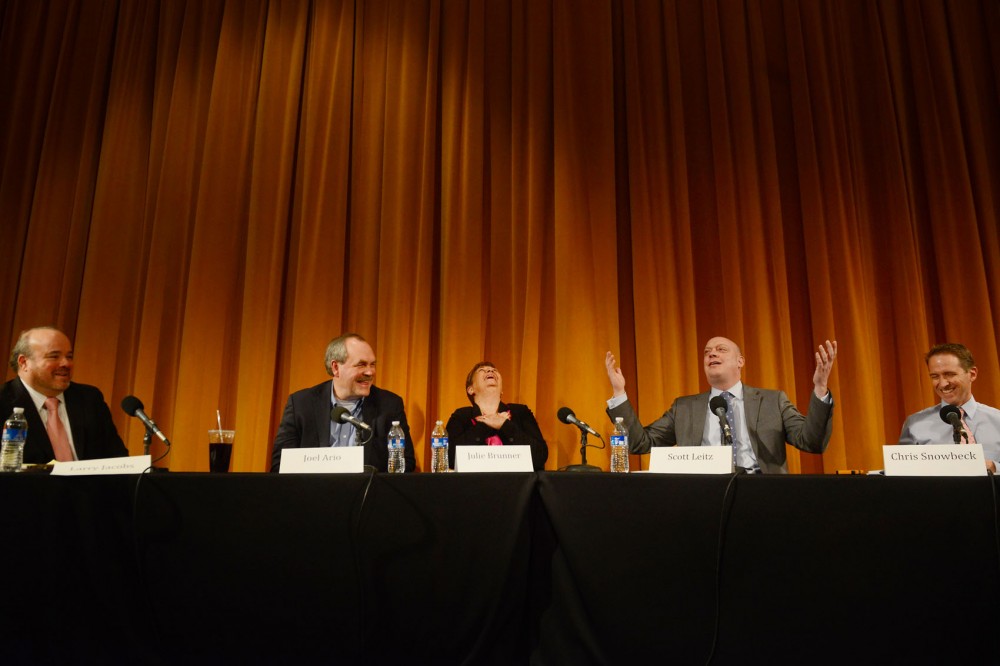After a tumultuous first year, Minnesota’s state-run health care exchange opened for its second enrollment period on Saturday.
At a Friday event at the University of Minnesota, officials and experts in the field asked Minnesotans frustrated with the MNsure website failures to give the exchange another shot.
A panel of experts on the issue, including the head of MNsure and the former director of the office for the federal health care exchange, met at the Cowles Auditorium in the Humphrey School of Public Affairs to discuss the strengths and weaknesses of the program, what had been done to improve it, and what the future is for health care exchanges in Minnesota and nationwide.
MNsure CEO Scott Leitz said the website’s user experience will be much smoother this year.
Leitz, a Humphrey School alumnus who took the position in April, said the site, MNsure.org, was tested all the way up until the start of the latest enrollment
period.
“That word ‘test’ is something that’s new this year,” he said.
Leitz said he understands that many Minnesotans might be reticent to check out the exchange after last year’s kerfuffle, but he thinks it is still worthwhile.
“Come back through, see what you’re eligible for, see what your subsidy might be,” he said.
Students and other young people typically see themselves as “invincible” and think they’ll stay healthy inevitably, Leitz said.
But MNsure officials want the young to know they could face high costs if they get sick or have an accident without health coverage backing them up.
Minnesota’s state government has embraced the Affordable Care Act, said Joel Ario, former director of the Office of Health Insurance Exchanges at the U.S. Department of Health and Human Services.
Ario said the health care system should focus on the quality of care rather than the volume of procedures and appointments when assessing compensation for providers.
According to MNsure, about 5 percent of Minnesotans are without health insurance, whereas about 13 percent of people at the national level don’t have insurance.
There’s still work to be done, Ario said, adding that health care officials need to do a better job of making health care topics easy to understand.
“I think we need to vastly simplify and improve people’s health literacy,” he said.
Luke Walaszek, an undeclared University sophomore, said he doesn’t understand MNsure.
But Walaszek said he doesn’t worry about the lack of information, adding that he never sought it out.
“I didn’t even know that this was something I should be concerned about,” he said.
Leitz said MNsure is working hard to educate Minnesotans this year, emphasizing a new ad campaign and a new tool on the website to help people navigate the different types of coverage.
Some experts saw November’s election as a referendum on both the Affordable Care Act and Minnesota’s handling of the law.
Democratic incumbent Gov. Mark Dayton and Sen. Al Franken focused on the policy rather than backing away from it.
“Franken’s strategy has been to embrace it and talk about the positives,” said Kathryn Pearson, a political science at the Humphrey School, in a recent interview.
It is unlikely that MNsure will get dismantled because of Minnesota’s relative lack of partisanship, Ario said.
MNsure’s open enrollment period runs through Feb. 15.








